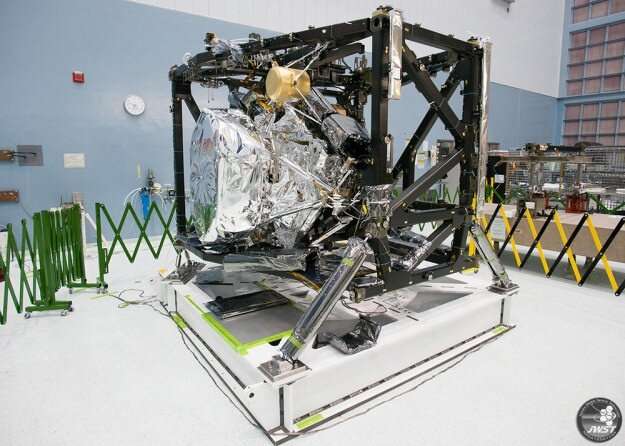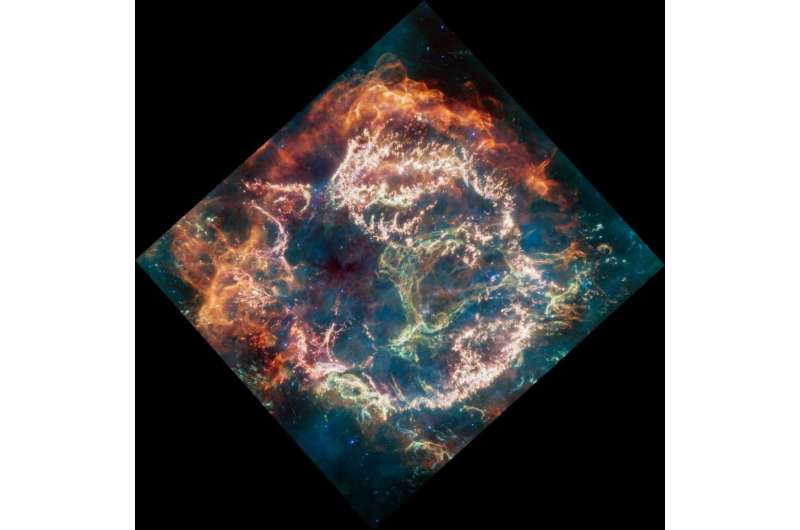This article has been reviewed according to Science X's editorial process and policies. Editors have highlighted the following attributes while ensuring the content's credibility:
fact-checked
trusted source
proofread
JWST's MIRI instrument is having problems again

Last week, NASA shared a blog post saying they detected a sensor glitch associated with the James Webb Space Telescope's Mid-Infrared Instrument (MIRI). For some reason, the sensor for MIRI's Medium Resolution Spectroscopy (MRS) is receiving less light than expected at the longest wavelengths.
NASA is investigating the cause, and said that the instrument is not at risk and no effect has been seen for images taken by MIRI. According to agency officials, all other modes of JWST and MIRI remain unaffected, and they are searching for the underlying issue.
The glitch was found this month during regular calibration and monitoring of the telescope's performance. NASA said they routinely monitor all 17 observing modes of the telescope and when they compared the brightness of standard stars that have been well-cataloged by other observatories to what MIRI was receiving, team members noticed a discrepancy in the data.
They also compared how MIRI's spectroscopy mode is working now versus how it worked earlier in the mission and they found that at the longest wavelengths, the throughput, or the amount of light that is registered by MIRI's sensors, has decreased since the instrument was turned on and commissioned last year.
This isn't the first issue MIRI's MRS has had. Last year in August, while preparing for observations with MIRI's MRS mode, the team detected increased friction with one of the wheels, and described the friction as "grating" or "sticky." The function of the wheel is to select between short, medium and longer wavelengths. Engineers were able to figure out a way to work around the issue and observations were resumed in November 2022.

MIRI is one of the most important instruments onboard. It allows the telescope to see in the wavelength range from 5 to 27 micrometers. The instrument has 4 modes: imaging, medium-resolution spectroscopy, low-resolution spectroscopy, and coronagraphy.
Engineers for the mission do not yet know if the two glitches are related, but are currently developing a systematic plan to approach, analyze, and explore the issue.
In the meantime, MIRI observations will continue as planned, and engineers will determine if there's a way to work around this issue, too.
"The team will gather all relevant ground test and flight data to fully assess MRS performance," wrote JWST communications specialist Thaddeus Cesari. "Further test observations will be taken to completely characterize the nature of the issue using this particular mode of observation. Next, a plan for long term-monitoring will be enacted, while the team continues to investigate the cause, identify risks, and explore mitigations that would potentially improve performance."
One possible mitigation or work-around strategy includes taking slightly longer exposures when observing at the longer wavelengths to increase the signal to noise.
Provided by Universe Today





















